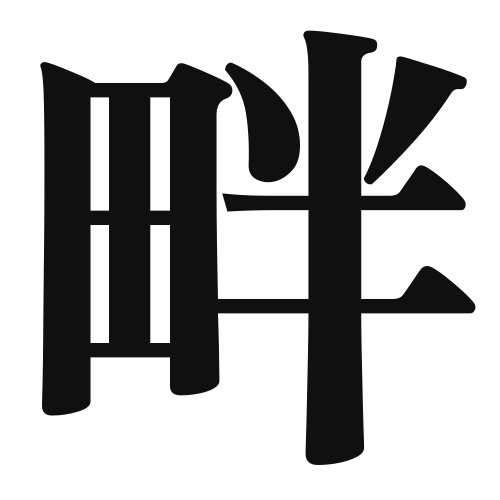1. Overview of Meaning
The kanji “畔” (pronounced “han”) refers to the bank or edge of a rice field or a body of water. It signifies a boundary or a dividing line, often associated with agricultural landscapes.
2. Formation and Radical
Formation of the Kanji: The kanji “畔” is a compound character (会意文字) that combines elements representing rice fields and boundaries. It visually conveys the idea of a division in agricultural settings.
Radical: The radical for “畔” is “田” (rice field), which is commonly associated with agriculture and farming.
3. Examples of Usage
Common Words and Phrases:
- 畔道 (handō) – path along the bank
- 畔に立つ (han ni tatsu) – to stand by the bank
Example Sentences in Daily Conversation:
- 「私たちは畔を歩きながら、夕日を楽しみました。」(We enjoyed the sunset while walking along the bank.)
- 「畔に咲いている花がとてもきれいです。」(The flowers blooming by the bank are very beautiful.)
4. Synonyms and Antonyms
Similar Kanji:
- 岸 (kishi) – shore or bank, typically refers to the edge of a river or lake.
- 境 (sakai) – boundary, which can refer to any kind of division or border.
Antonyms:
- 中心 (chūshin) – center, which indicates the middle point as opposed to the edge or boundary.
5. Cultural and Historical Background
Relation to Japanese Culture: The concept of “畔” is deeply rooted in Japan’s agricultural history, where rice farming has been a central part of life. The banks of rice fields are often depicted in traditional art and literature.
Proverbs and Idioms:
- 「畔を越えて、田に入る」(To cross the bank and enter the field) – This phrase can imply taking risks or venturing into new territories.
